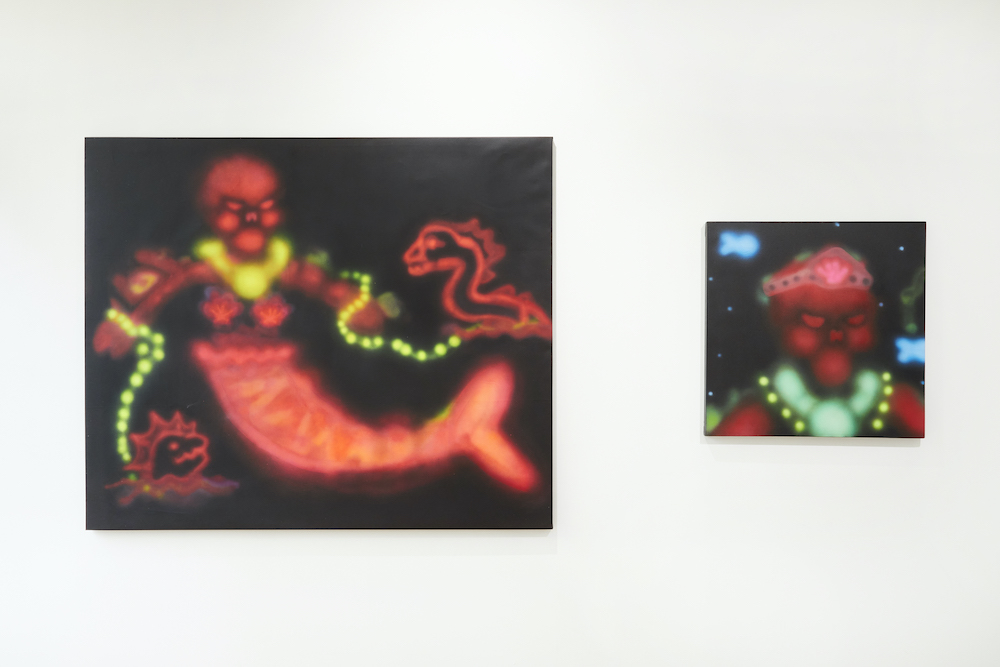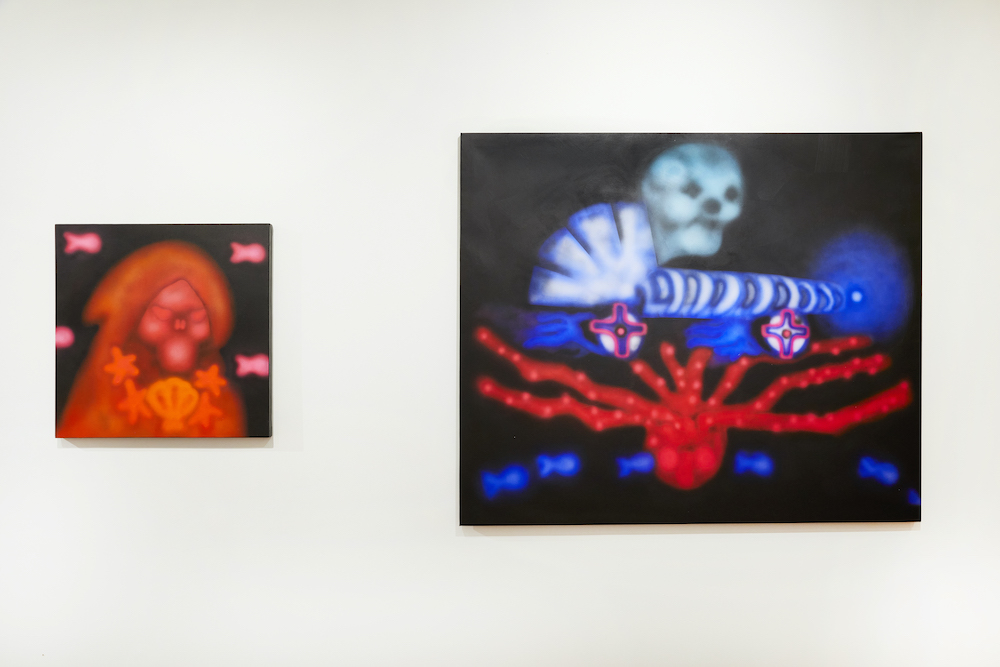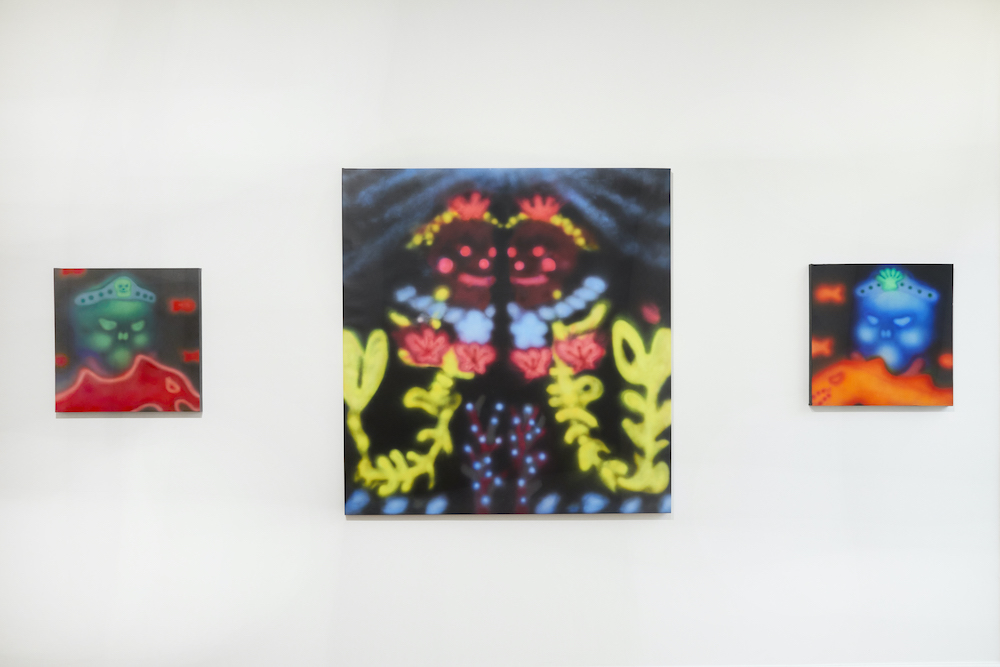There’s something remarkable about standing in front of a painting that makes you squint, move, readjust your perspective and question your eyesight altogether. Christina Allan’s paintings do just that. Made with acrylic and spray paint, Allan’s compositions are crisp with dense, rich paint, and yet at the same time are hazy with blurry details applied with an airbrush. Her new paintings, on view in DEAD SEA at New York’s Alchemy Gallery, feature the artist’s signature skeleton figures in neon colors set in a jet-black background. Often appearing to be in motion, Allan’s creatures act in some ways as surrogates for the artist, exploring new territories and concepts of the human condition, like collective and personal anxieties. In the case of her new works, Allan’s otherworldly creatures explore the depths and mysteries of the ocean.
Throughout her work, Allan addresses complex concepts, such as the existential question of the meaning of life and the limitations of human consciousness. Attempting to parse these larger realities, Allan puts her creatures in scenarios to explore the world around us. Pairing these weighty topics with a contemporary, street aesthetic, Allan adds levity to difficult topics.

Christina Allan, “DEAD SEA” installation view, 2022. Image courtesy of the artist and Alchemy Gallery.
To create her work, she first makes a digital painting on Photoshop, which is then translated into a physical version. As the eye surveys the canvas, attempting to focus on the darkness of the black background, hazy neon details appear to vibrate, as if radiating from within the bodies like a bioluminescent organism. The overall visual effect is captivating as the eye fights to separate layers and find a focal point, and the colors and shapes dissolve into the airbrushed fog.
Allan’s subjects are mermaids, grim reapers, octopi and sea monsters. In Siren Captured (2022), a bright pink skeleton with a mermaid fin is attached with neon yellow lassoes to two eels reminiscent of the Loch Ness monster. With its title referencing a siren having been captured, it seems the sea monsters have abducted the pink figure. The siren’s glowing necklace lends a regal air, as if depicting a royal hijacking. While a fantastical interpretation of mythology, the scene points to the many lingering questions humans have of life under the sea. Who’s to say that such an abduction isn’t based on reality?

Christina Allan, “DEAD SEA” installation view, 2022. Courtesy of the artist and Alchemy Gallery.
A similarly fantastical scene unfolds in Shell Rider (2022), in which a blue skeleton rides an underwater motorcycle made of shells and possibly an upside-down octopus. A line of fish forms below, as if marking the rider’s path. With a determined look, the figure uses its blue light to swiftly navigate the pitch-black sea, perhaps on its way to rescue the siren.
In exploring these curiosities, Allan also captures the tension between fear and awe that exists in nature, particularly in the ocean. In Sea Nymphs (2022), two mirror-images of frightening, pink skeletons with piercing eyes gaze at one another. They wear sparkling tiaras, necklaces and seashell bikinis, imagery associated with Disney. Yet the sea nymphs’ bodies are stripped of flesh, revealing the bony spine and tail underneath.
Allan’s subjects are both playful and profound, underscoring the infinite capacity of the human imagination while also pointing to the limitations of our own knowledge of the world. Visually exciting with their juxtaposing crisp and hazy applications of paint, her paintings are also remarkably fresh. While there are nods to street art, Allan’s style is unlike any seen in New York galleries today.


